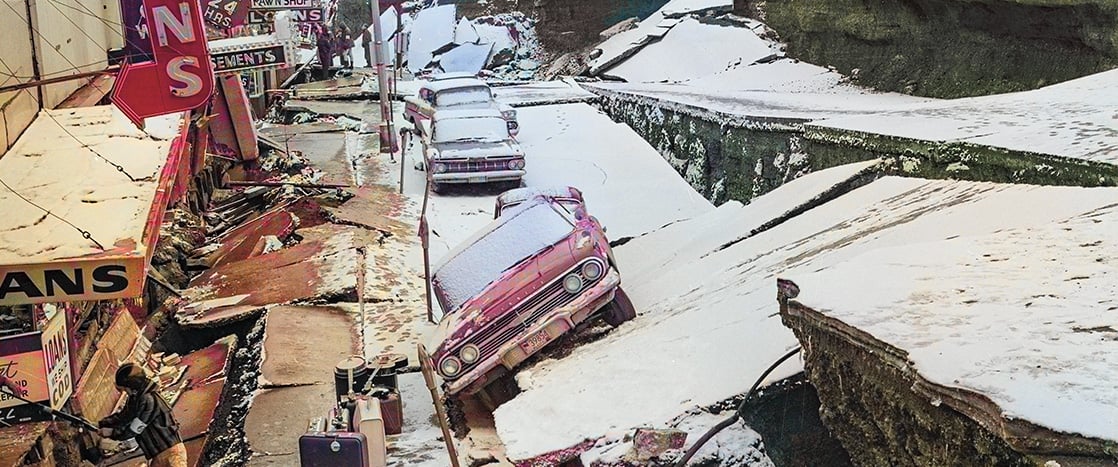PETER HAEUSSLER/USGS
George Plafker
Scientist George Plafker stared out of the airplane window in horror. He was flying low over Alaska. Two days before, on March 27, 1964, the state had been struck by what is still the most powerful earthquake in United States history.
The massive earthquake lasted more than four minutes—about 20 times as long as most earthquakes! The quake triggered giant ocean waves. Dozens of people lost their lives.
Plafker, who was 34 years old at the time, is a geologist. That’s a scientist who studies Earth. He was not an earthquake expert—not yet. But he had spent time in Alaska when he first started as a geologist. He’d fallen in love with the Alaskan wilderness—the towering mountains and wide rushing rivers, the thrill of seeing grizzlies and moose and wolves in the wild.
Scientist George Plafker was in an airplane. He was flying low over Alaska. He sat staring out of the plane’s window. He looked down at the ground in horror. An earthquake had struck the state just two days before. It happened on March 27, 1964. It was the most powerful earthquake in United States history.
The huge earthquake lasted more than four minutes. That’s about 20 times longer than most earthquakes! The quake triggered giant ocean waves. Dozens of people lost their lives.
Plafker was 34 years old at the time. He’s a geologist. That’s a scientist who studies Earth. He was not an earthquake expert. At least, not yet. But he had spent time in Alaska. It was when he first became a geologist. He’d fallen in love with the Alaskan wilderness. He loved the towering mountains and wide rushing rivers. And he was thrilled to see grizzlies, moose, and wolves in the wild.

